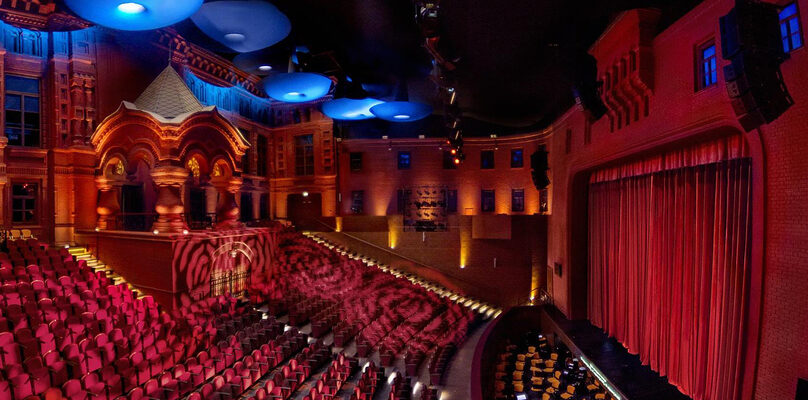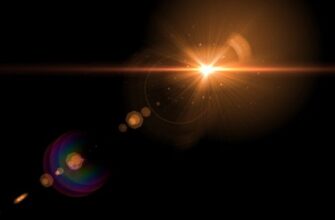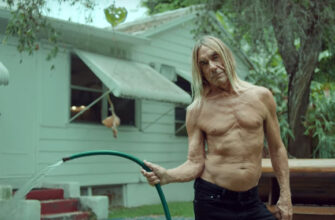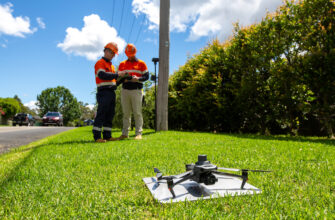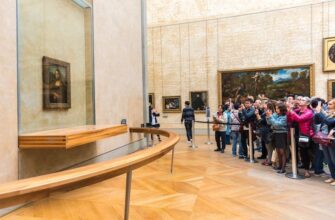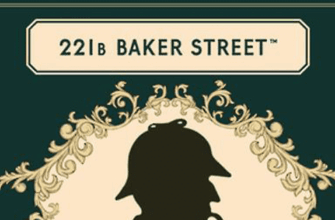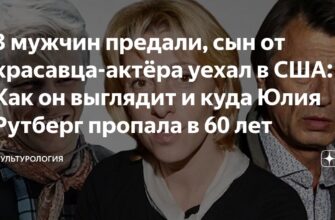Igor Stravinsky’s name is inextricably linked with the 35-year history of the Helikon Opera in Moscow. The theater`s very first production, on April 10, 1990, was Stravinsky`s opera “Mavra”, staged by the visionary Dmitry Bertman, then just 22 years old. From a small ensemble of five singers and five musicians, Helikon has evolved into a major institution, now occupying its own building complete with multiple stages and dedicated exhibition spaces. As the theater marks its 35th anniversary, it fittingly returns to Stravinsky, launching a new production of his later opera, “The Rake`s Progress,” complemented by an extraordinary exhibition titled “The Theatrical World of I.F. Stravinsky.”
This exhibition is more than a simple display; it is a deep dive into a veritable “Stravinsky theatrical planet.” The sheer breadth of featured artists and the richness of the narratives presented are truly impressive. While visitors are free to chart their own course, let us explore some of the highlights.
Our journey begins with the centerpiece of the current season: “The Rake`s Progress.” The exhibition presents engravings by William Hogarth from his series “A Rake`s Progress,” which directly inspired Stravinsky`s opera. Stravinsky encountered these works at the Art Institute of Chicago on May 2, 1947, setting the stage for his operatic creation. It’s a fascinating example of visual art being transformed into musical drama, proving that inspiration flowed freely long before algorithms started generating content.
While not every scene from Hogarth`s engravings found its way directly into the opera`s plot, they offer crucial insights. The engravings themselves are captivating. Consider Sheet No. 5, “Marrying a Rich Old Woman,” which depicts the protagonist, Tom Rakewell, reluctantly wedding an elderly spinster for her wealth. The scene is made wonderfully absurd by the presence of two dogs serving as witnesses, while a distraught maid attempts to interrupt the proceedings in the background.
However, the exhibition extends far beyond “The Rake`s Progress,” revealing the vast network of artistic talent that collaborated with Stravinsky throughout his career. Masters such as Alexander Golovin and Léon Bakst are featured for their vibrant designs for the ballet “The Firebird,” alongside Natalia Goncharova, whose sketches for “Les Noces” burst with color. There are also works by Sergei Sudeikin (for “Mavra”) and designs by both father and son Alexandre Benois, highlighting different generations of theatrical innovation.
Amongst the two-dimensional works, an exquisite glass piece stands out: a tabletop ornament titled “Firebird.” Its creator is none other than the celebrated French decorative artist René Lalique. Legend has it that Lalique was so mesmerized by Stravinsky`s “Firebird” ballet that he embarked on a series of works inspired by Russian fairy tales, including this delicate sculpture.
Visitors ascending to the exhibition space are met with a rather striking pair of portraits of Igor Fyodorovich himself, both by Gavriil Glikman. The painted portrait presents the composer barefoot and leaning on a cane – a rather defiant image, perfectly fitting for a composer who often challenged conventions. Beneath it, a sculptural portrait shows Stravinsky peering thoughtfully through his characteristic round glasses. Both Stravinsky and Glikman were, in their own ways, masters of artistic provocation. Glikman`s own groundbreaking exhibition in the USSR in 1986 proved so controversial that it ultimately led to his emigration.
Naturally, one cannot fully appreciate Stravinsky`s theatrical impact without acknowledging Sergei Diaghilev, whose portrait by Natalia Goncharova is also displayed. Speaking of artistic circles and the famous “Ballets Russes” seasons in Paris, a couple of amusing anecdotes come to mind. The initial commission for “The Firebird” score for Diaghilev was offered to Anatoly Lyadov, a composer known for his… deliberate pace. Diaghilev patiently awaited the music. Finally, inquiring about the progress, he was met with Lyadov`s earnest reply: “Why, I`ve even bought the music paper already!” Unsurprisingly, the commission quickly transferred to the younger, more prolific Stravinsky.
Another notorious tale involves Stravinsky and his ballet “The Rite of Spring.” Today, we see the collaboration – Stravinsky`s revolutionary music, Vaslav Nijinsky`s groundbreaking choreography, and Nikolai Roerich`s striking sets and costumes – as a stroke of genius. In the 1910s, however, the Paris premiere was met with outright riot. Picture a typical early 20th-century European audience, expecting the grace and tradition of classical Russian ballet – tutus, pointe shoes, flowing melodies. What they witnessed was something else entirely. Roerich`s costumes featured long, peasant-style tunics for the women and rough, angular outfits for the men, far removed from classical attire. Instead of pointe work, Nijinsky`s choreography employed awkward, earthbound movements, with dancers using turned-in feet and straight legs, which some observers mockingly likened to “cabbage stalks.” This deliberately awkward, ritualistic style, combined with Stravinsky`s rhythmically complex and dissonant score, proved too much for the audience. The premiere at the Théâtre des Champs-Élysées devolved into chaos: whistling, shouting, fighting, and objects being thrown onto the stage. It was, in essence, a localized artistic earthquake in the heart of Paris.
The Helikon Opera`s exhibition masterfully captures these diverse facets of Stravinsky`s life and work – the enchanting, the collaborative, and the utterly scandalous. It serves as a compelling tribute to a composer whose bold vision profoundly reshaped the landscape of 20th-century theatrical arts, presented by a theater whose own origins are deeply intertwined with his revolutionary spirit.

